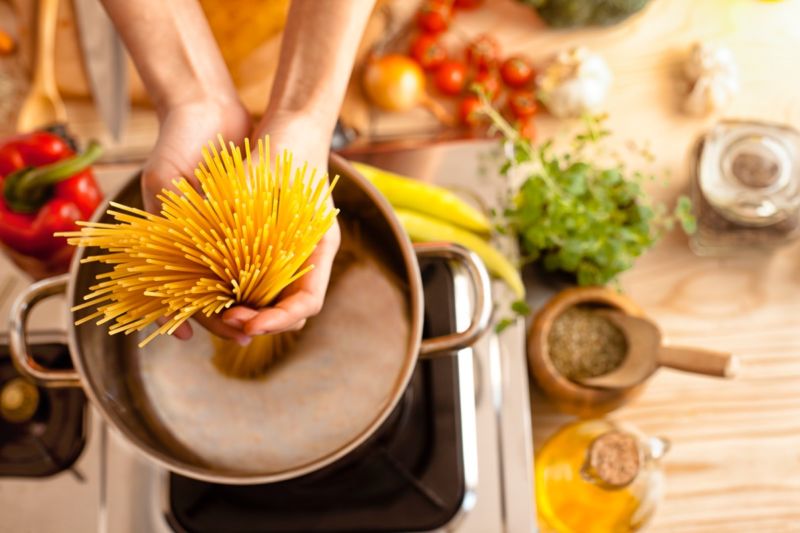Want to know if spaghetti is al dente? Check how much it curls in the pot

Enlarge / A new model predicts the way a spaghetti rod turns from straight to curly as it cooks. (credit: zeljkosantrac / Getty Images)
Place a strand of spaghetti in a pot of boiling water and it will start to sag as it softens, before sinking slowly to the bottom of the pot, where it will curl back on itself to form a U shape. A cursory explanation might be that as the spaghetti softens during cooking, it deforms more easily, and gravity causes the saggy strand to sink. But what accounts for the curling behavior? Physicists at the University of California, Berkeley, provide a much more thorough explanation in a new paper in Physical Review E.
There have been a surprisingly large number of scientific papers seeking to understand the various properties of spaghetti, both cooking and eating it-the mechanics of slurping the pasta into one's mouth, for instance, or spitting it out (aka the "reverse spaghetti problem"). The most well-known is the question of how to get dry spaghetti strands to break neatly in two, rather than three or more scattered pieces.
The late Richard Feynman famously puzzled over the dilemma, conducting informal experiments in his home kitchen. French physicists successfully explained the dynamics at work in 2006. They found that, counterintuitively, a dry spaghetti strand produces a "kick back" traveling wave as it breaks. This wave temporarily increases the curvature in other sections, leading to many more breaks. Basile Audoly and Si(C)bastien Neukirch won the 2006 Ig Nobel Prize for their insight.
Read 9 remaining paragraphs | Comments